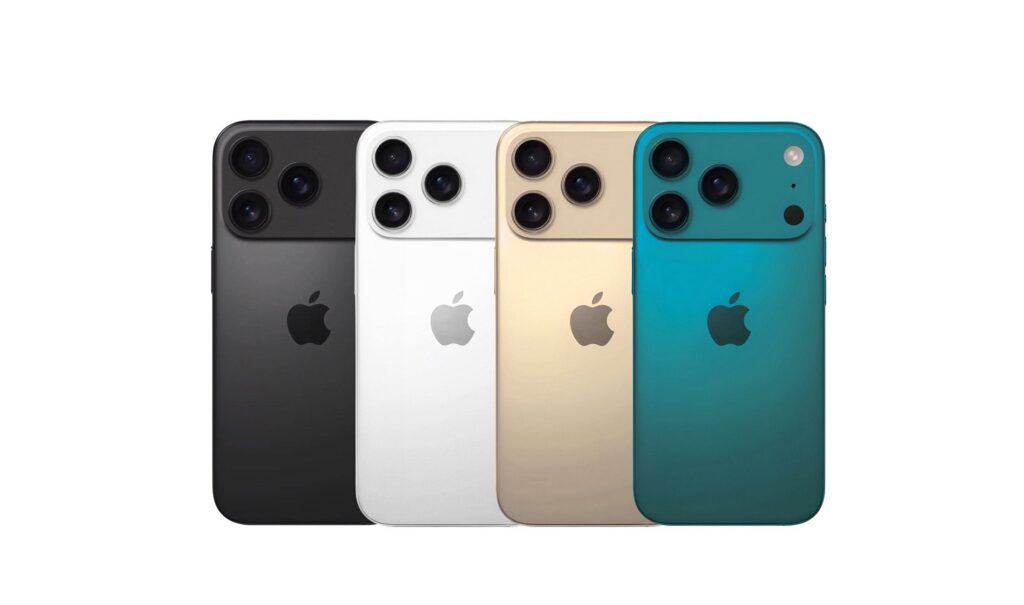A recent leak has sent the tech world into a frenzy, offering a first look at what may be Apple’s most ambitious smartphone yet: the iPhone 17 Air. Slated for release later this year, this ultra-slim device is already being hailed as a potential game-changer in Apple’s 2025 product lineup.
According to sources close to Apple’s supply chain, the iPhone 17 Air will boast a radically redesigned chassis, with an unprecedented focus on thinness and lightweight engineering. Internal documentation and leaked prototype imagery suggest the device could be Apple’s slimmest iPhone to date, possibly rivalling the compact profile of the iPod Touch but with flagship-level performance. For a company known for pushing industrial design boundaries, this move signals a renewed emphasis on portability and style.
The iPhone 17 Air is said to depart noticeably from the design language of the iPhone 15 and 16 generations. Reports point to a significantly thinner aluminum frame and a more curved edge profile, with refined materials to enhance durability without adding bulk. Industry analysts believe this model could also feature a new form of reinforced glass, potentially a next-generation version of Apple’s Ceramic Shield, to balance its slender silhouette with increased scratch and drop resistance.
Apple’s decision to brand this model as “Air” evokes parallels to the MacBook Air and iPad Air, both known for combining performance with portability. This move could be a strategic attempt to segment the iPhone family even further, appealing to users who value ultra-lightweight devices for travel, fitness, or everyday ease of use.
Perhaps the most surprising revelation in the leak concerns battery technology, a category where Apple has historically faced intense scrutiny. The iPhone 17 Air is expected to feature a redesigned battery architecture, possibly leveraging a stacked battery configuration. This setup not only allows for a more compact battery design but also offers increased capacity and heat efficiency. The result? A thinner device that doesn’t sacrifice endurance.
Coupled with Apple’s forthcoming A19 chip, tipped to be its most power-efficient processor yet, users can expect noticeable gains in battery life, even with more demanding applications and 5G connectivity. Some insiders suggest Apple may be targeting “all-day” usage for the Air model, a feat rarely achieved in ultra-slim smartphones.
While the leak offered limited details about the camera system, industry watchers speculate that the iPhone 17 Air could inherit upgraded sensors from the iPhone 17 Pro, possibly in a more compact array. Apple may also debut new AI-driven image processing enhancements, reflecting its broader push into on-device intelligence.

Display-wise, the Air is expected to feature a 6.1-inch OLED panel with a 120Hz ProMotion refresh rate, ensuring smooth scrolling and vibrant color performance. There are also hints that Apple could introduce a new low-power LTPO (low-temperature polycrystalline oxide) display to conserve energy, a logical step given the device’s compact form.
The iPhone 17 Air appears to mark a shift in how Apple structures its smartphone lineup. It could sit alongside the iPhone 17, 17 Plus, and 17 Pro models, carving out a new identity for users seeking a premium but ultra-portable experience. It’s a play that mirrors the company’s iPad strategy, offering multiple tiers for different use cases, all without diluting the core brand.
Early renders suggest that the Air model will come in a new range of finishes, including matte pastel tones and possibly a new titanium or recycled aluminum variant, in line with Apple’s growing emphasis on sustainability.
Leaks and speculation aside, the iPhone 17 Air comes at a pivotal time for Apple. With increased competition from foldables, AI-enhanced smartphones, and challengers in emerging markets, Apple appears to be doubling down on its design heritage while evolving for the future.
The strategic focus on battery longevity, environmental impact, and form factor innovation positions the iPhone 17 Air not just as another smartphone release, but as a potential redefinition of what premium mobile design can look like.
With Apple’s official unveiling expected in September, anticipation is already building for what could be its most headline-grabbing release in years. One thing is certain, if the iPhone 17 Air lives up to the leaks, Apple’s lightweight champion may very well be its next heavyweight hit.

